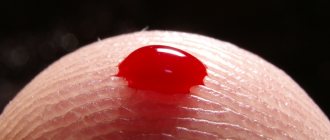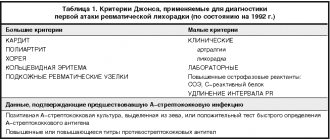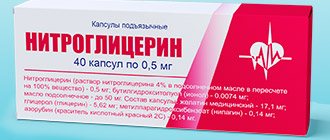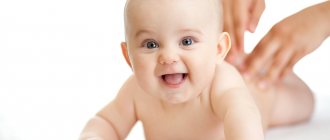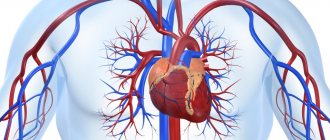Adolescence is a period of hormonal changes and active growth, and therefore teenagers cannot always sort out their feelings on their own. Because of this, you may miss symptoms that indicate the presence of serious diseases, including heart disease.
The best cardiologists in Rostov-on-Don do not recommend making diagnoses based solely on symptoms, but it is important to know what can signal a malfunction of the heart muscle in order to contact a specialist in time.
Causes of tingling in the heart area
Physiological factors
Tingling in the precordial area is possible with strong excitement during acute stress. In such cases, it appears suddenly, is mild and is localized mainly in the left half of the chest. The symptom is often accompanied by a feeling of freezing in the heart, hyperhidrosis of the palms and feet, dizziness, and trembling of the hands. After the unpleasant situation is resolved, the person’s well-being quickly returns to normal.
Neuroses
In most cases, tingling in the heart area is caused by neurological disorders. With cardioneurosis, the patient is bothered by periodic stabbing pain that is not associated with physical activity or time of day. Usually the symptom is provoked by mental overstrain, stress, or a conflict situation. The tingling sensation is moderate, but it seems to the person that it is a sign of severe heart disease.
Unlike organic cardiac diseases, with neurosis, patients tend to describe their sensations in detail: where exactly it stings, how often the symptoms occur, what they are accompanied by. Cardioneurosis is typically characterized by a combination of tingling in the heart area with other autonomic symptoms: sudden bradycardia or tachycardia, sweating, paleness or flushing of the skin.
Intercostal neuralgia
If the intercostal nerves are affected on the left side, many patients describe symptoms as tingling and heart pain. Discomfort increases when touching the ribs, and especially when feeling the intercostal spaces. Strong stabbing sensations appear when taking a deep breath, coughing and sneezing. To relieve symptoms, the person holds a stationary position, slightly bent over.
Tingling in the chest with intercostal neuralgia is observed constantly for several days, its occurrence does not depend on the time of day. Some patients try to relieve pain with nitroglycerin, but the drug does not have any effect. Paresthesia and numbness in the affected area of the chest are also possible. Increased pain is sometimes accompanied by sweating and redness of the skin.
Arrhythmias
Extrasystole is often clinically manifested by tingling in the cardiac region. This type of arrhythmia is characterized by a combination of stabbing sensations with periodic cardiac arrest. The difference from coronary cardiovascular diseases is the absence of irradiation of pain to other parts of the body. Tingling due to rhythm disturbances, as a rule, occurs without a visible provoking factor and does not last long.
Myocarditis
With this disease, tingling usually develops several weeks after a viral or bacterial infection. Discomfort in the heart area appears against the background of deteriorating health - the person complains of weakness, shortness of breath, and increased body temperature. The stabbing sensations with myocarditis are not intense, long-lasting, and do not radiate to the arm or shoulder blade.
Cardiac ischemia
With stable angina, precordial tingling can be felt during the interictal period or at the very beginning of an anginal attack. In IHD, stabbing pains have a clear connection with physical activity (fast walking, climbing stairs) or with a psychologically traumatic situation. The pain lasts about 5-10 minutes and radiates to the arm and left shoulder blade. A pathognomonic sign is relief of the condition after the use of nitrovasodilators.
Joint damage
Unpleasant sensations in the heart area can be caused by arthrosis of the costosternal joints and osteochondrosis. Tingling is provoked by physical activity, sudden turns or bending of the body. When a person sits or lies quietly, the intensity of the symptom decreases. Tingling pain occurs not only in the heart area, but also in the center of the sternum, on the side of the chest.
In addition to tingling, there is numbness and a feeling of “pins and needles in the chest.” Symptoms intensify with deep inhalations and exhalations. Sometimes with osteochondrosis, the above symptoms are combined with pain in the upper abdomen. Patients also complain of difficulty raising their arms, impaired fine motor skills of the fingers, and decreased skin sensitivity.
Rare causes
- Acute coronary syndrome:
unstable angina, myocardial infarction. - Cardiomyopathy:
hypertrophic, restrictive, dilated. - Inflammatory processes
: pericarditis, endocarditis. - Congenital and acquired heart defects.
Factors contributing to heart rhythm disturbances in a child
First of all, these are complications during pregnancy in all periods, including:
- high blood pressure;
- the presence of herpes virus or human papilloma virus in the mother’s blood;
- severe swelling.
Childhood heart disease can also be caused by too late childbirth, as well as genetic predisposition. In addition, children who are born 4th or more in the family are at risk.
Competent and comprehensive heart prevention is important even when a pediatric cardiologist in Saratov did not find any abnormalities, after listening to the heart, he noted its rhythmic and uninterrupted work. The whole family can take part in heart disease prevention. To do this, it is important to lead an active lifestyle, eliminate stress, coordinate physical and mental stress, and choose a proper and balanced diet.
Listen to what your child says and how he behaves. Sometimes an abnormal heart rhythm in a child is noticeable by the fact that the baby holds his stomach or chest, is capricious, cries, and sometimes even coughs heavily.
The difficulty with many childhood heart diseases is that some of the symptoms are similar to the common cold, including:
- severe joint pain, aches;
- feverish condition;
- swelling of the feet and ankles;
- severe chest pain;
- dyspnea.
If such symptoms appear, it is necessary to urgently contact a pediatric cardiologist in Saratov, undergo all examinations and tests to confirm or refute the diagnosis and begin drug treatment as quickly as possible.
It is recommended to visit specialist Elena Nikolaevna Shulgina once a year so that she can listen to the work of the heart, confirm or rule out heart rhythm disturbances in the child, and, based on an integrated approach, eliminate the risks of developing childhood heart disease. If the baby has a diagnosed disease, then it is necessary to visit a pediatric cardiologist in Saratov more often. With a competent approach and systematic treatment, the treatment of childhood heart disease is highly effective, which will allow the baby to fully develop.
Make an appointment with a cardiologist
Choose a doctor
Diagnostics
The examination of the patient begins with a standard examination by a cardiologist. The doctor conducts auscultation of the heart to identify signs of organic pathology - rough noises, deafness, splitting or accentuation of tones. Since it is quite difficult to find out the cause of tingling during a clinical examination, laboratory and instrumental diagnostic methods are used:
- Electrocardiography.
Based on the results of the study, the doctor accurately determines the presence of arrhythmia and its type. Violation of repolarization and a decrease in the voltage of the teeth indicates myocarditis or coronary myocardial diseases. If there are difficulties in diagnosis, daily ECG monitoring is recommended. - Ultrasound of the heart.
Echocardiography is effective in identifying organic cardiac pathology that causes tingling in the heart. According to echocardiography, the thickness and uniformity of contraction of the heart wall, ejection fraction, and the condition of the pericardial cavity are assessed. Blood flow is measured using Doppler ultrasound. - Radiography.
A standard chest x-ray is necessary for a preliminary assessment of the size and shape of the heart and visualization of the contours of the great vessels. For a more detailed study of anatomical structures, an MRI is performed. - Blood tests.
Inflammatory damage to heart tissue is manifested by leukocytosis and increased ESR in the hemogram. An increase in acute phase proteins is characteristic. In coronary diseases, an increase in the levels of total cholesterol and LDL fraction is typical. If necessary, myocardial markers are measured.
If cardiac neurosis or peripheral nerve damage is suspected, the patient is referred to a neurologist. In addition to assessing the neurological status, the specialist may prescribe EEG, electroneuromyography, CT and MRI. For psychogenic neuroses, a psychiatrist should participate in the diagnostic search. Signs of articular pathology are an indication for consultation with a rheumatologist.
Epidemiology
Sudden death accounts for about 5% of all childhood deaths (incidence ranges from 1.5 to 8.0 per 100,000 per year). It is estimated that 5,000 to 7,000 apparently healthy children in the United States die suddenly each year (among adults, the rate of SCD is 3,000,000 to 4,000,000 cases per year). In addition, among athletes, SCD is registered in 1 out of 50,000-100,000 of the population. According to pathological studies, SCD accounts for 2.3% of deaths under the age of 22 years and 0.6% - between the ages of 3 and 13 years.
Sudden death among young people occurs in 20% during sports, in 30% during sleep, in 50% under various circumstances while awake. The immediate cause of death in older children and in children with organic pathology, regardless of age, is ventricular fibrillation in 80%, while asystole is recorded in 88% of younger age groups. Unexpected deaths sometimes occur in dramatic circumstances and often have medical and legal consequences. Some of these deaths are unpredictable and unpreventable at this time, however, in many cases there are warning signs, family history of sudden death at a young age, clinical abnormalities or electrocardiogram abnormalities.
Treatment
Help before diagnosis
Tingling in the heart is usually provoked by psycho-emotional factors, so it is advisable to use light herbal sedatives. To get rid of signs of neurosis, it is necessary to normalize your daily routine and diet, increase physical activity and time spent in the fresh air. If a person is diagnosed with coronary artery disease, to eliminate the stabbing pain, you need to take fast-acting vasodilators prescribed by your doctor.
Conservative therapy
Tingling rarely reaches such intensity that there is a threat of painful shock and emergency measures are required. The main thing in treatment is the elimination of the etiological factor. After successful treatment of the existing disease, the tingling in the heart disappears. The drug treatment regimen is selected individually according to the type of pathological process. The following drugs are used:
- Sedatives
. Medicines that act on the central nervous system are effective for cardioneuroses. They quickly stabilize the psycho-emotional background and eliminate increased anxiety. To eliminate neurotic disorders, their long-term use is required. - Muscle relaxants
. The drugs are widely recommended to combat pain caused by neuralgia and osteochondrosis. They affect peripheral nerve endings and reduce painful muscle tension. - Antiarrhythmic medications
. To normalize heart rhythm, cardiologists use 4 classes of medications. Medicines are selected taking into account the nature and severity of the arrhythmia, the presence of concomitant diseases of the cardiovascular system. - Anti-inflammatory drugs
. Medicines from the group of nonsteroidal anti-inflammatory drugs are indicated for myocarditis and other infectious processes, joint diseases. If therapy is insufficiently effective, glucocorticoids are prescribed.
For the targeted action of medications for neuralgia and joint damage, the electrophoresis technique is effective. To reduce tingling and pain of neurological origin, physiotherapeutic treatment is carried out - laser therapy, UHF, magnetic therapy. For neuroses, individual and group sessions with a psychotherapist are required.
Tetralogy of Fallot
Patients with tetralogy of Fallot who have reconstructive surgery have a 6% risk of sudden death between 3 months and 20 years. Sudden death occurs most often in patients with significant residual hemodynamic abnormalities, such as residual right ventricular outflow obstruction with development of right ventricular hypertension, pulmonary failure with right ventricular volume overload, residual interventricular defect, or dysfunction of the right or left ventricle. SCD in tetralogy of Fallot is associated with the development of ventricular arrhythmia.
Modern surgical techniques at a younger age can minimize the progression of ventricular hypertrophy, the formation of a scar that serves as a future substrate for ventricular arrhythmia. Thanks to the use of this approach, SCD in patients with tetralogy of Fallot has become less common. In operated patients with tetralogy of Fallot, careful hemodynamic and electrophysiological studies are justified. Electrocardiographic monitoring is recommended. Correction of hemodynamic disorders is of great importance. Restoration of existing residual defects, treatment with antiarrhythmics, or implantation of a defibrillator may be indicated. Phenytoin has been suggested by some as an effective drug in this situation.
Myocarditis
Myocarditis accounts for 20-40% of cases of SCD and is most often caused by Coxsackievirus group B. Cardiac involvement is unpredictable and may involve the conduction system, causing heart block, or the myocardium, causing ventricular tachycardia. Recent influenza-like illness is often present, although symptoms may be mild and clinical signs of heart failure may be subtle or absent. The ECG reveals diffuse low voltage, ST-T changes, and often heart block and ventricular arrhythmia. The results of echocardiography and myocardial biopsy confirm the diagnosis.
Treatment must be individualized for each patient and may include ventricular pacing and antiarrhythmic drugs. Rest and avoidance of physical stress are important during the acute and healing phases until ultrasound, ambulatory electrocardiographic monitoring, and stress testing results normalize. Physical stress should be avoided.
Single ventricle
The use of palliative treatment for a single functioning ventricle is becoming more frequent and successful. An increasing number of children are undergoing Fontan surgery. Sinus node dysfunction and atrial tachyarrhythmias are quite common after surgery; the most likely cause is extensive atrial resection with associated scar formation. This is exacerbated by the higher systemic venous pressure after the Fontan procedure. SCD is caused by atrial tachycardia with rapid conduction through the atrioventricular node. Therapy: antiarrhythmics, antitachycardial pacing.
Mitral valve prolapse
Mitral valve prolapse is common but rarely causes sudden death. It can occur during physical stress and be caused by ventricular tachyarrhythmia. One review cited a total of 60 reported sudden deaths among patients with mitral valve prolapse, and only 4 of them were under 20 years of age. However, 5 to 24% of sudden deaths from heart disease are attributed to mitral valve prolapse. Patients with a family history of sudden death, previous syncope, abnormal resting ECG, prolonged QT interval, and complex ventricular tachyarrhythmia are at greatest risk. Although beta blockers are often used, it is unclear whether antiarrhythmic therapy can prevent sudden death, and electrophysiological studies are rarely helpful. Most clinicians are tolerant of sports participation. For patients at highest risk and those in whom stress testing or ambulatory monitoring reveals a worsening of arrhythmia or symptoms with exercise, a more cautious approach is recommended.
Kawasaki disease
Kawasaki disease is the most common cause of acquired coronary artery disease in young and older children. Kawasaki disease occurs throughout the world, but is most common in Asia. Coronary artery aneurysms are usually proximal and visible on ultrasound. Aneurysms are often multiple and usually affect the left coronary artery.
Coronary dilatation occurs acutely in almost half of patients, and in most cases death occurs during the third or fourth week of acute illness. However, coronary disorders persist in 23% of patients after 3 months and in 8% after 2 years. SCD occurs in 1-2% of patients with untreated Kawasaki syndrome. If patients at risk for sudden death can be identified early, coronary artery disease can be minimized by early administration of gamma globulin and aspirin therapy. There are different opinions regarding the management of patients who have had Kawasaki disease and who have chronic coronary artery disease. Close monitoring and anticoagulant therapy are recommended. Activity restrictions and intermittent assessment of myocardial perfusion by various methods, dobutamine stress echocardiography or coronary angiography are justified. Interventions are indicated for patients with severe symptoms or myocardial ischemia.
Preventive measures
It is especially important for girls and boys to listen to medical recommendations regarding lifestyle during puberty, which will help prevent heart complications:
- Try to lead an active lifestyle, do at least basic morning exercises every day. Do five-minute warm-ups after two hours of sedentary work.
- Eat a balanced diet. Proteins (meat, fish, dairy products, eggs), fresh vegetables and fruits, and whole grain cereals are especially important for a growing body.
- Allow enough time for sleep - at least 8 hours.
- Regularly undergo medical examinations - they will help identify hidden pathologies.
- Follow a work-rest schedule, do not overwork, and avoid stressful situations.
Actually, heart pain in teenagers is quite rare. Typically, chest pain is associated with physiological causes, NCD, pathology of the gastrointestinal tract or spine. However, such complaints should not be ignored. A timely visit to a doctor and a comprehensive examination can identify pathologies of the heart or other internal organs at an early stage and avoid the development of complications.
Dilated cardiomyopathy
Dilated cardiomyopathy (DCM) is characterized by dilation and limitation of the function of the left or both ventricles. The most common symptom in patients with DCM, and the cause of death, is congestive heart failure. Arrhythmias as a cause of death in DCM in childhood are recorded less frequently.
The etiology of DCM has not been established. Among the causes discussed are viral infections and immunological disorders. It has been proven that DCM can be a consequence of long-term chronic tachyarrhythmia. Research is currently underway to study mitochondrial abnormalities as one of the main causes of DCM. Family history plays an important role. It has been revealed that in children with a family history, the risk of DCM is 600-700 times higher than in the general population. Cases of autosomal dominant, autosomal recessive and X-linked inheritance have been recorded.
There are four outcomes for this disease:
- complete recovery;
- improvement;
- death (10% of children with DCM die suddenly - especially children with persistent impairment of ventricular function, the risk is higher with I-II degree AV block);
- the need for a heart transplant or other surgical interventions.
A long-term study of DCM revealed that 1/3 of patients die, with the majority within 1-2 years after the onset of the disease; in 1/3, improvement occurs, but residual cardiac dysfunction persists; and 1/3 have a complete cure. The 5-year survival rate in children is 34%-66%. The most critical period is the first six months of the disease, when in most cases it is possible to determine in which direction the development of DCM will occur. Since the cause of this disease has not been precisely identified, there is no etiotropic treatment. Therapy includes the prevention and treatment of heart failure, if necessary, antiarrhythmic measures, minimizing the risk of thromboembolic complications.

